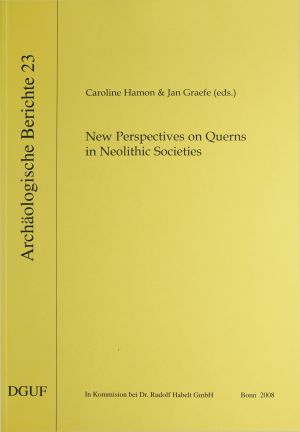
Zitationsvorschlag
Veröffentlicht
New Perspectives on Querns in Neolithic Societies
Seit der Zeit der ersten neolithischen Gesellschaften wird das Korn der angebauten Kulturpflanzen mittels Mahlsteinen zu Mehl verarbeitet. Grundlage einer agrarischen Lebensweise stellt die Domestikation und Zucht von Tieren sowie der Anbau und die Verarbeitung von Kulturpflanzen dar. Erst innerhalb der vergangenen fünfzehn Jahre konnten grundlegende Aspekte der Pflanzenverarbeitung geklärt werden. Untersuchungen zu Mahl- und Schleifsteinen tragen zum Verständnis und Wissen neolithischer Wirtschaftsformen und sozialer Organisation bei. Durch neue, mehr oder weniger regionale Studien wurden neue Daten gewonnen, die Aussagen zu Austauschsystemen der Rohmaterialien, der wirtschaftlichen Grundlagen oder auch der sozialen und symbolischen Bedeutung der Mahlsteine ermöglichen.
Die hier veröffentlichten Artikel resultieren aus einer Sitzung, die im Rahmen des 13. Jahrestreffens der European Association of Archaeologists (EAA) im September 2007 in Zadar (Kroatien) stattgefunden hat.
Die Aufsätze zeigen, dass durch einen globalen Überblick zu Mahl- und Schleifsteinen wichtige Beiträge für die Interpretation des Status und der Funktion eines Siedlungsplatzes geliefert werden können.






